Prediction of Suspended Sediment Concentration Based on the Turbidity-Concentration Relationship Determined via Underwater Image Analysis
Abstract
:1. Introduction
2. Materials and Methods
2.1. Experimental Method
2.2. Analysis Method
- (1)
- (2)
- (3)
3. Results
3.1. Measurement Results (RGB Values)
3.2. Model Development
3.3. Estimation of Concentration from Turbidity
4. Discussion
5. Conclusions
Author Contributions
Funding
Institutional Review Board Statement
Informed Consent Statement
Data Availability Statement
Acknowledgments
Conflicts of Interest
References
- Yoon, B.; Woo, H. Sediment problems in Korea. J. Hydraul. Eng. 2000, 126, 486–491. [Google Scholar] [CrossRef]
- Jolicoeur, S.; Caissie, D.; Frenette, I.; Hardie, P.; Bouchard, M. Suspended sediment concentration in relation to forestry operations in Catamaran Brook and its tributaries (Canada). River Res. Appl. 2006, 23, 141–154. [Google Scholar] [CrossRef]
- Kang, W.; Yang, C.Y.; Lee, J.; Julien, P.Y. Sediment yield for ungauged watersheds in South Korea. KSCE J. Civ. Eng. 2019, 23, 5109–5120. [Google Scholar] [CrossRef]
- Areu-Rangel, O.S.; Bonasia, R.; Di Traglia, F.; Del Soldato, M.; Casagli, N. Flood Susceptibility and Sediment Transport Analysis of Stromboli Island after the 3 July 2019 Paroxysmal Explosion. Sustainability 2020, 12, 3268. [Google Scholar] [CrossRef] [Green Version]
- Kang, W.; Jang, E.K.; Yang, C.Y.; Julien, P.Y. Geospatial analysis and model development for specific degradation in South Korea using model tree data mining. CATENA 2021, 200, 105142. [Google Scholar] [CrossRef]
- Kang, W.; Lee, K.; Jang, E.K. Evaluation and Validation of Estimated Sediment Yield and Transport Model Developed with Model Tree Technique. Appl. Sci. 2022, 12, 1119. [Google Scholar] [CrossRef]
- Wang, F.; Huai, W.; Guo, Y. Analytical model for the suspended sediment concentration in the ice-covered alluvial channels. J. Hydrol. 2021, 597, 126338. [Google Scholar] [CrossRef]
- Chassiot, L.; Lajeunesse, P.; Bernier, J.F. Riverbank erosion in cold environments: Review and outlook. Earth-Sci. Rev. 2020, 207, 103231. [Google Scholar] [CrossRef]
- John, C.K.; Pu, J.H.; Pandey, M.; Hanmaiahgari, P.R. Sediment deposition within rainwater: Case study comparison of four different sites in Ikorodu, Nigeria. Fluids 2021, 6, 124. [Google Scholar] [CrossRef]
- Yang, C.Y.; Kang, W.; Lee, J.H.; Julien, P.Y. Sediment regimes in South Korea. River Res. Appl. 2022, 38, 209–221. [Google Scholar] [CrossRef]
- Julien, P.Y. Erosion and Sedimentation, 2nd ed.; Cambridge University Press: Cambridge, UK, 2010. [Google Scholar]
- Gray, J.R.; Gartner, J.W. Technological advances in suspended-sediment surrogate monitoring. Water Resour. Res. 2009, 45. [Google Scholar] [CrossRef] [Green Version]
- Felix, D.; Albayrak, I.; Boes, R.M. Laboratory investigation on measuring suspended sediment by portable laser diffractometer (LISST) focusing on particle shape. Geo-Mar. Lett. 2013, 33, 485–498. [Google Scholar] [CrossRef] [Green Version]
- Wren, D.G.; Barkdoll, B.D.; Kuhnle, R.A.; Derrow, R.W. Field techniques for suspended-sediment measurement. J. Hydraul. Eng. 2000, 126, 97–104. [Google Scholar] [CrossRef]
- Meral, R. Laboratory evaluation of acoustic backscatter and LISST methods for measurements of suspended sediments. Sensors 2008, 8, 979–993. [Google Scholar] [CrossRef] [Green Version]
- Gartner, J.W.; Cheng, R.T.; Wang, P.F.; Richter, K. Laboratory and field evaluations of the LISST-100 instrument for suspended particle size determinations. Mar. Geol. 2001, 175, 199–219. [Google Scholar] [CrossRef]
- Traykovski, P.; Latter, R.J.; Irish, J.D. A laboratory evaluation of the laser in situ scattering and transmissometery instrument using natural sediments. Mar. Geol. 1999, 159, 355–367. [Google Scholar] [CrossRef]
- Ghorbani, M.A.; Khatibi, R.; Singh, V.P.; Kahya, E.; Ruskeepää, H.; Saggi, M.K.; Sivakumar, B.; Kim, S.; Salmasi, F.; Kashani, M.H.; et al. Continuous monitoring of suspended sediment concentrations using image analytics and deriving inherent correlations by machine learning. Sci. Rep. 2020, 10, 8589. [Google Scholar] [CrossRef]
- DKKTOA. Handheld Multi-Parameter Water Quality Meter Model WQC-30. Available online: http://www.sequoiasci.com/product/lisst-200x/ (accessed on 10 February 2021).
- Sequoia Scientific, Inc. LISST-200X Measures Particle Size Distribution and Concentration, and Optical VSF. Available online: https://www.toadkk.com/english/product/details/por/wqc-30.html (accessed on 20 January 2022).
- Velasco, D.W.; Huhta, C.A. Experimental verification of acoustic Doppler velocimeter (ADV) performance in fine-grained, high sediment concentration fluids. App Note SonTek/YSI 2010, 1–19. Available online: https://www.xylemanalytics.kr/media/pdfs/sontek-adv-in-fluid-mud.pdf (accessed on 1 February 2022).
- Bright, C.E.; Mager, S.M. A national-scale study of spatial variability in the relationship between turbidity and suspended sediment concentration and sediment properties. River Res. Appl. 2020, 36, 1449–1459. [Google Scholar] [CrossRef]
- Minella, J.P.; Merten, G.H.; Reichert, J.M.; Clarke, R.T. Estimating suspended sediment concentrations from turbidity measurements and the calibration problem. Hydrol. Process. 2008, 22, 1819–1830. [Google Scholar] [CrossRef] [Green Version]
- Rutherfurd, I.D.; Kenyon, C.; Thoms, M.; Grove, J.; Turnbull, J.; Davies, P.; Lawrence, S. Human impacts on suspended sediment and turbidity in the River Murray, South Eastern Australia: Multiple lines of evidence. River Res. Appl. 2020, 36, 522–541. [Google Scholar] [CrossRef]
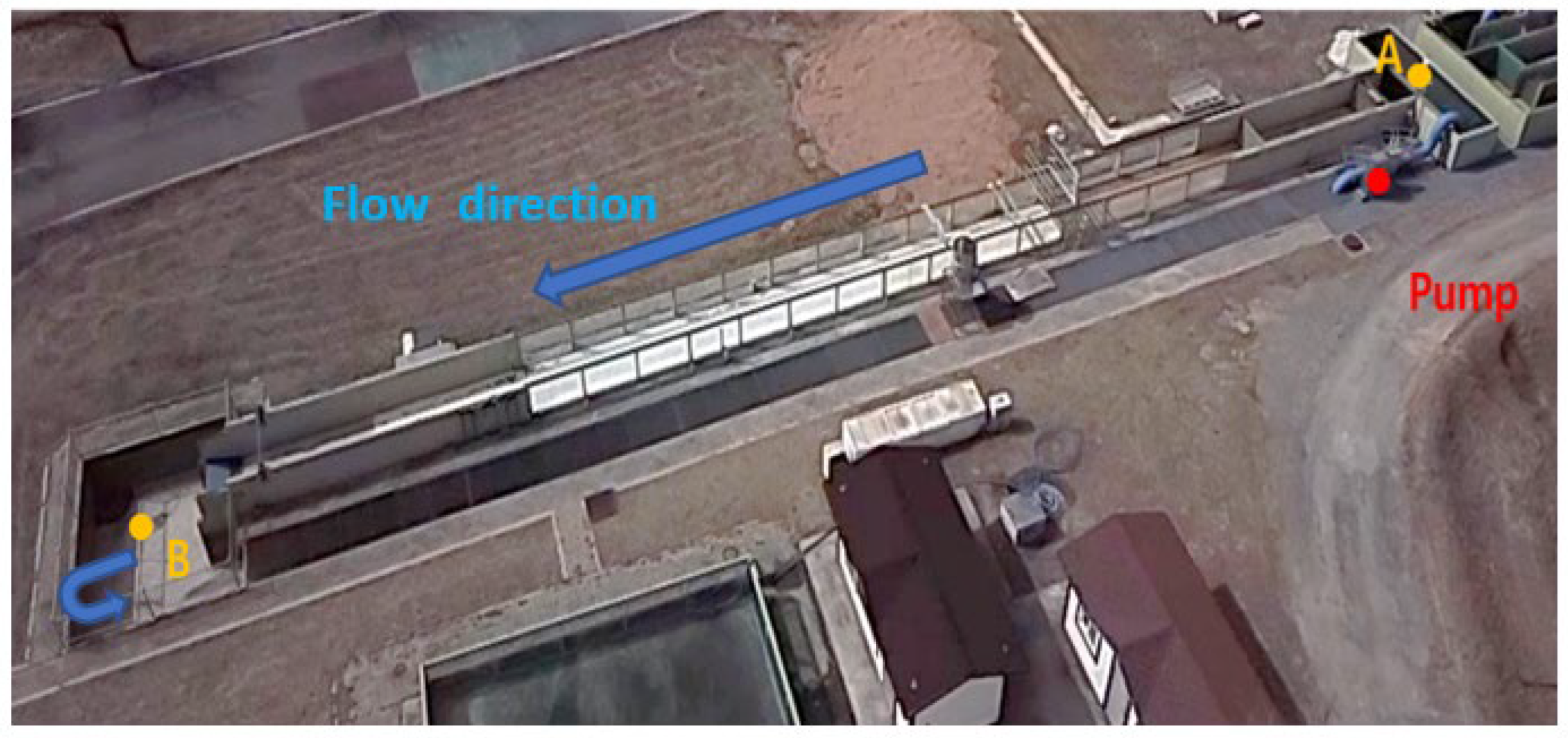
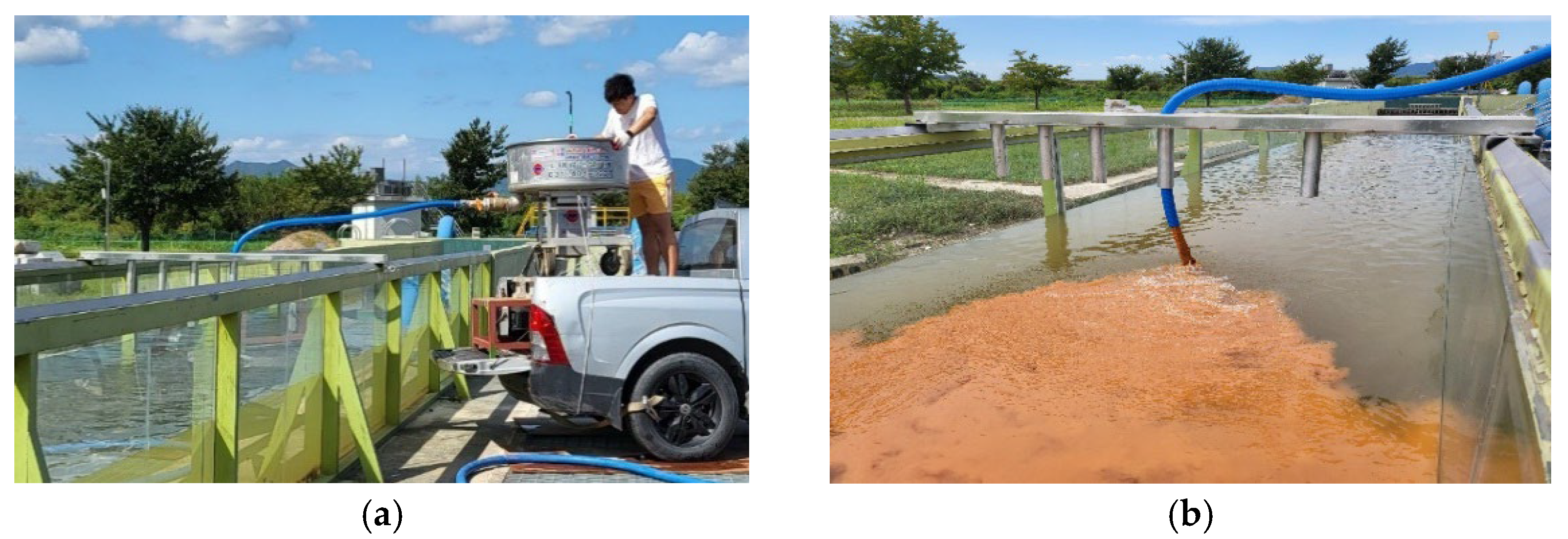
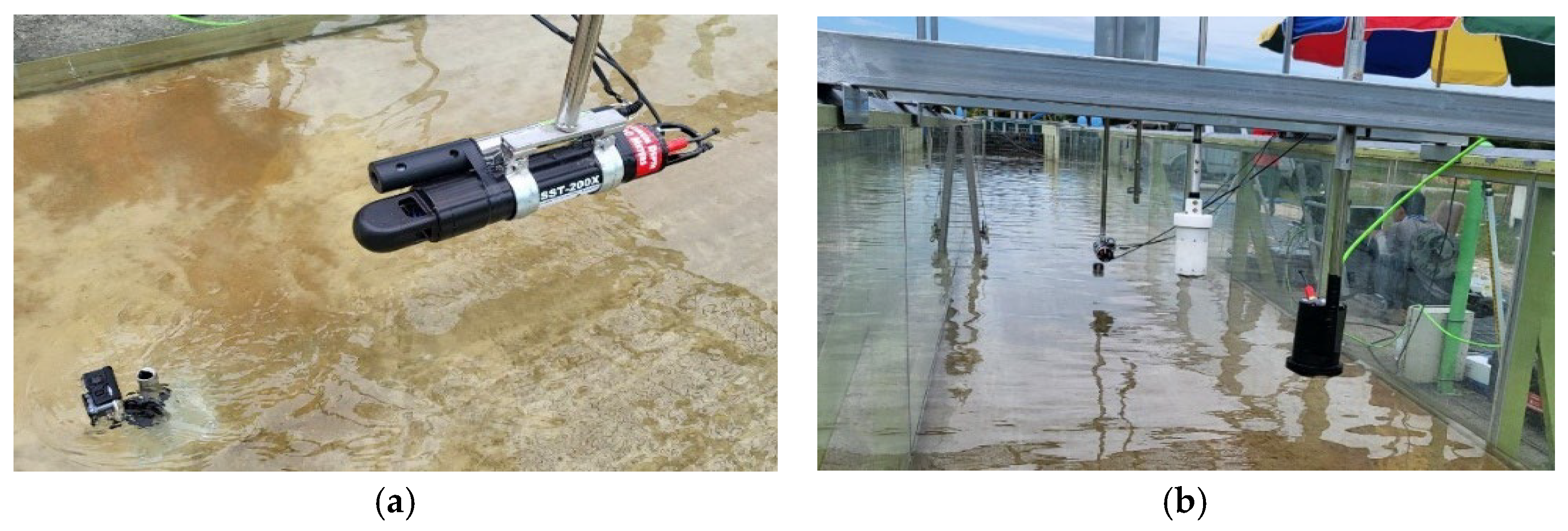
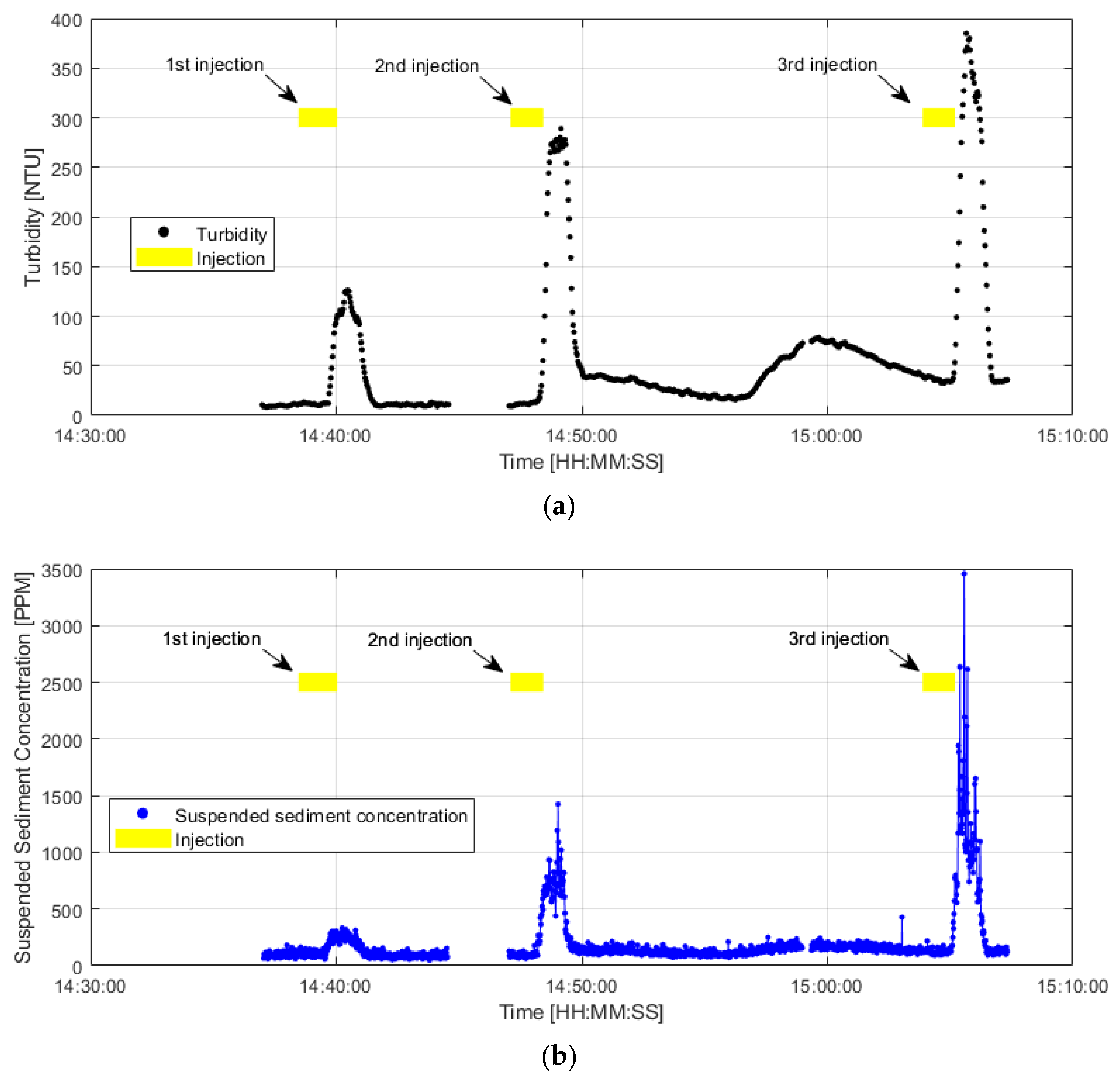
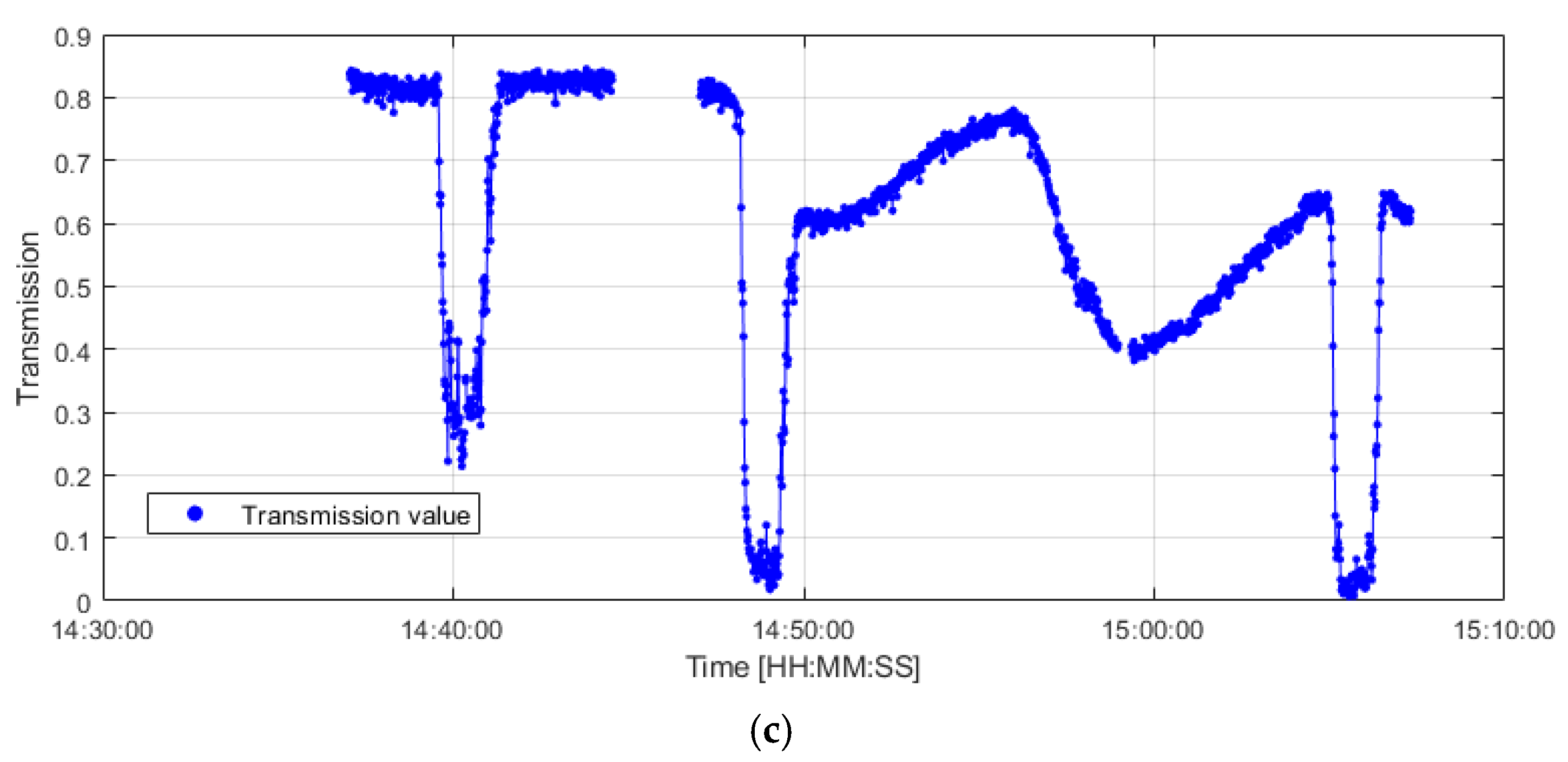
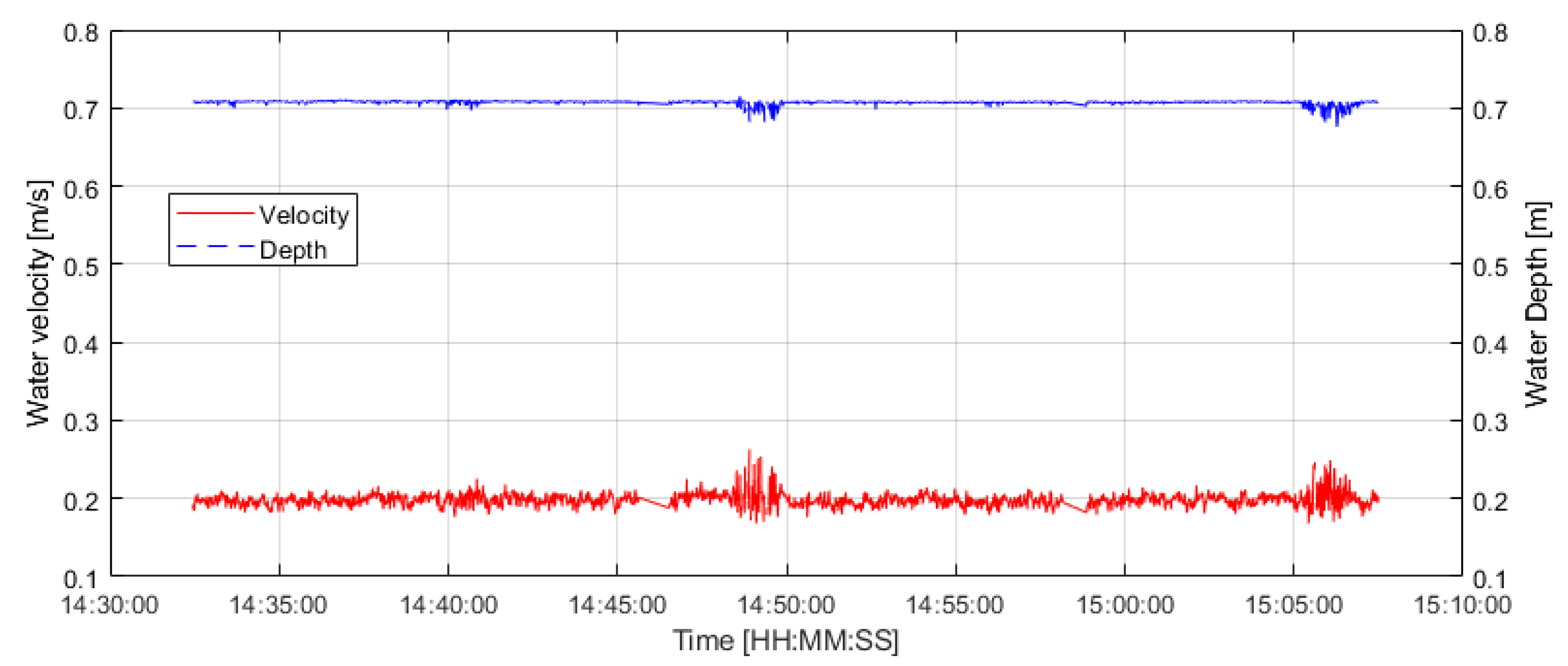

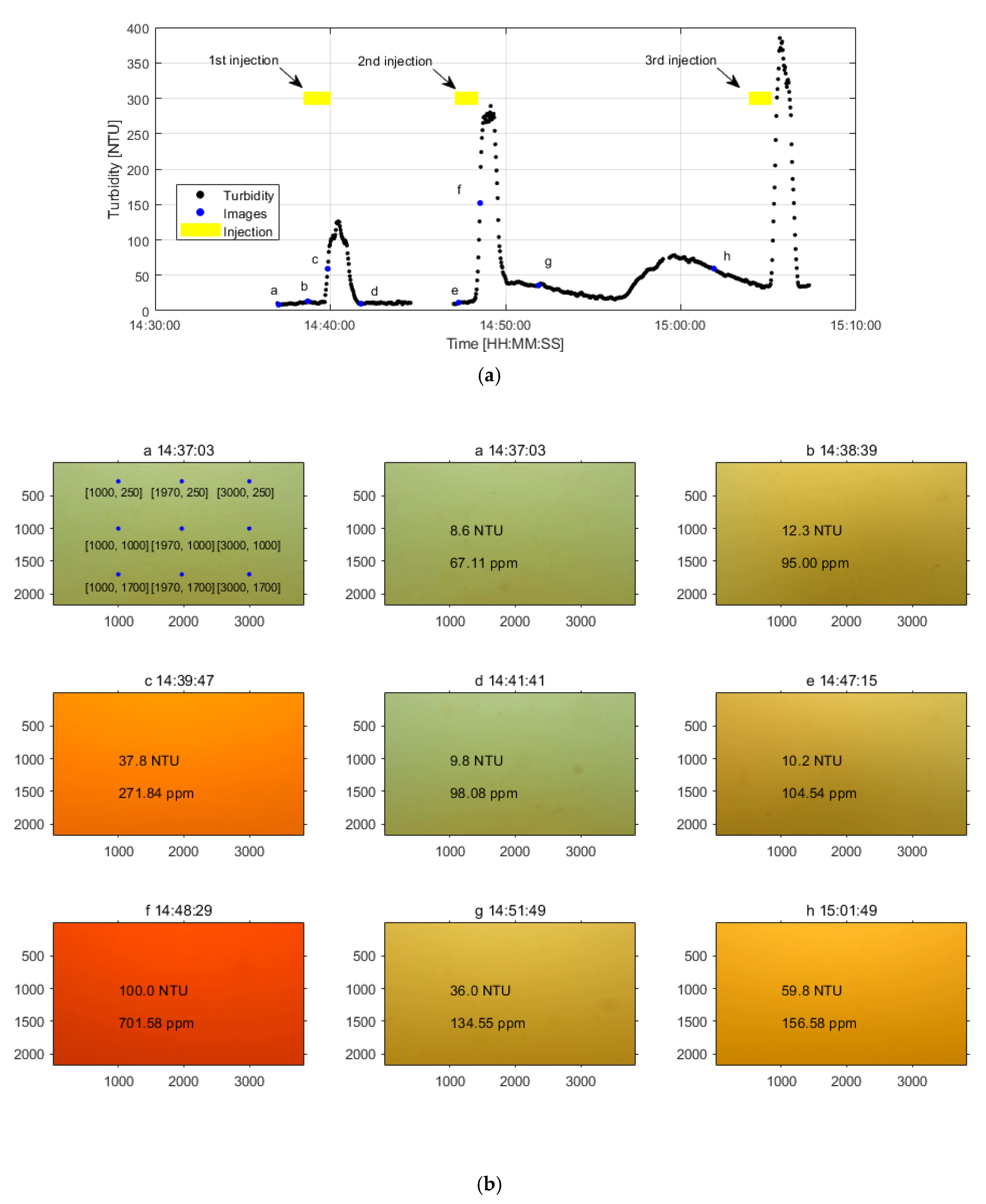
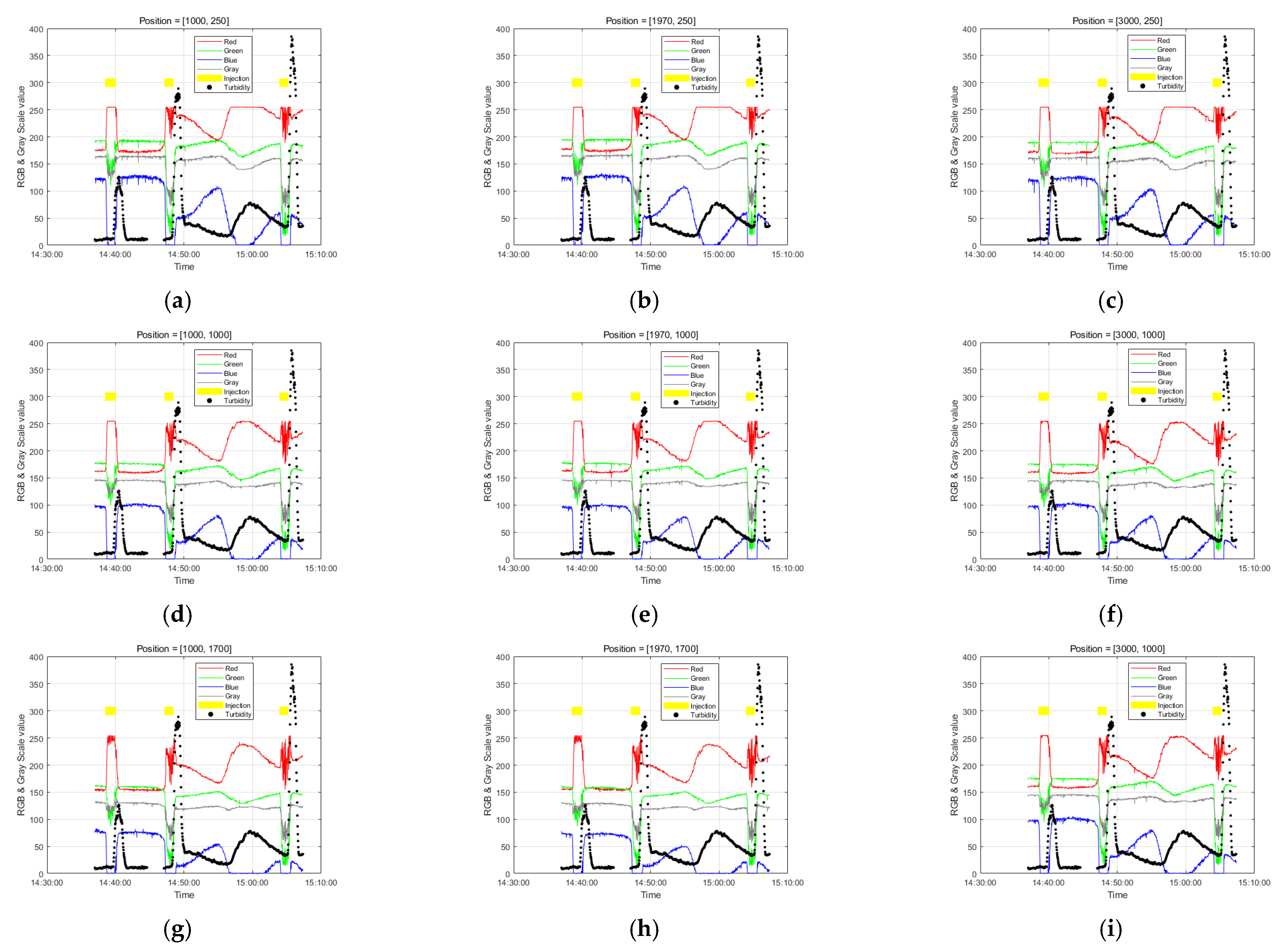

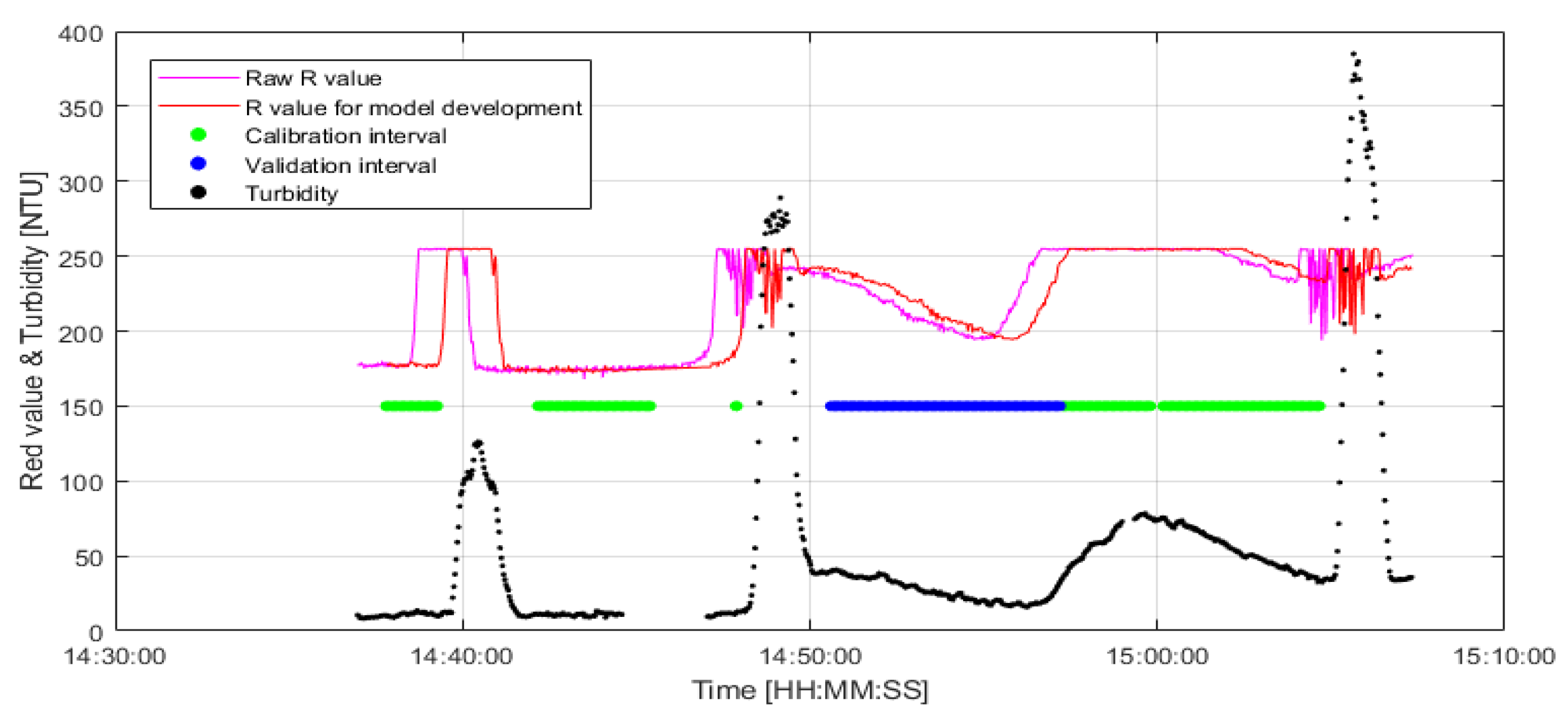

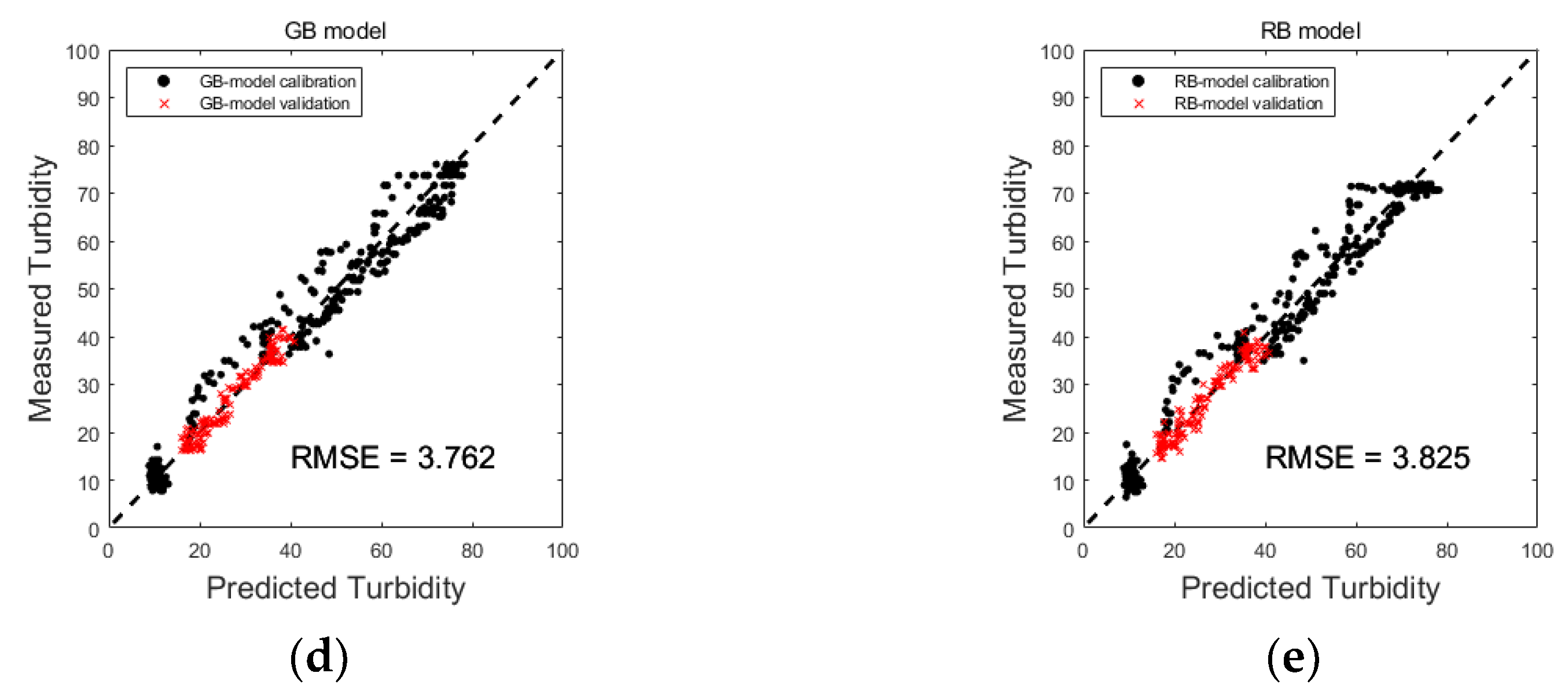
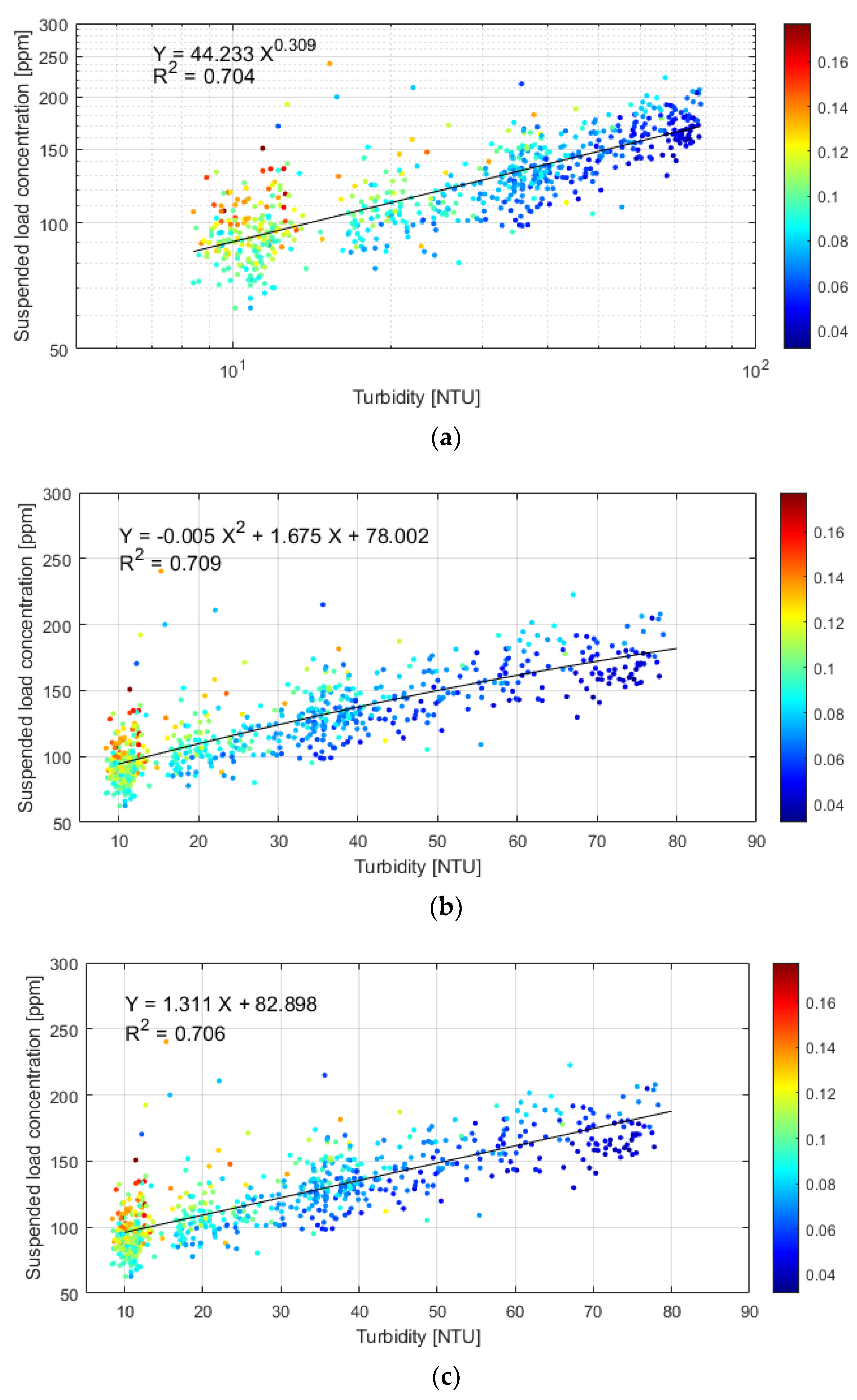

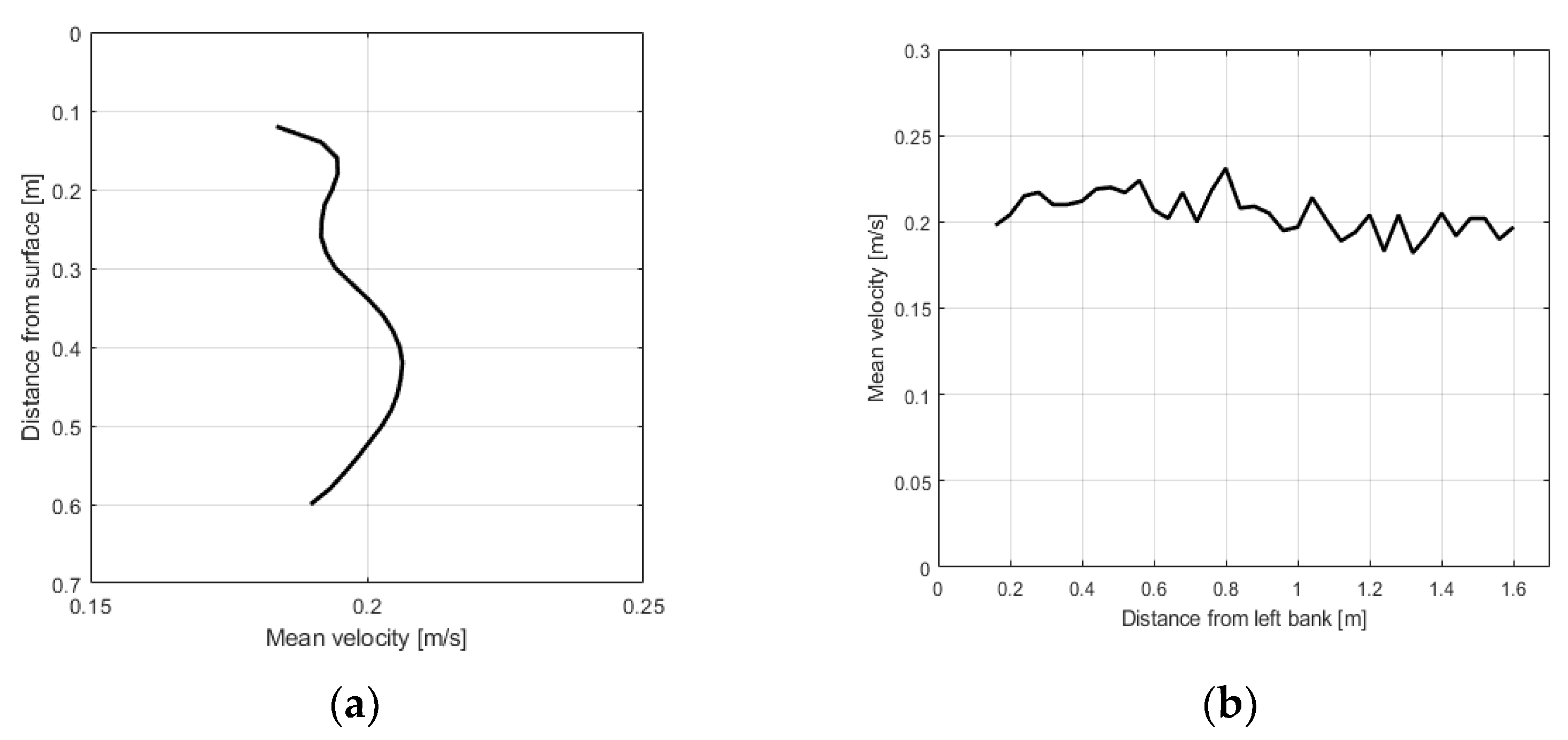
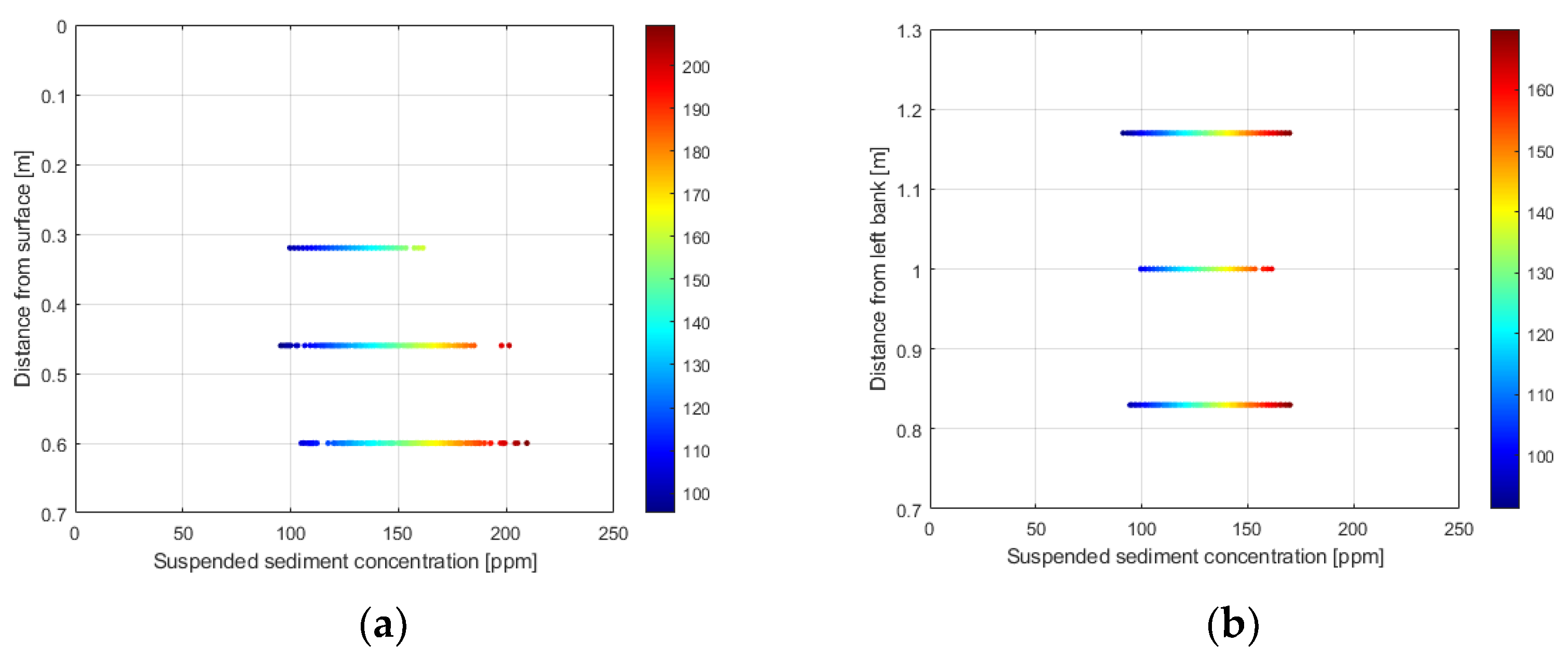
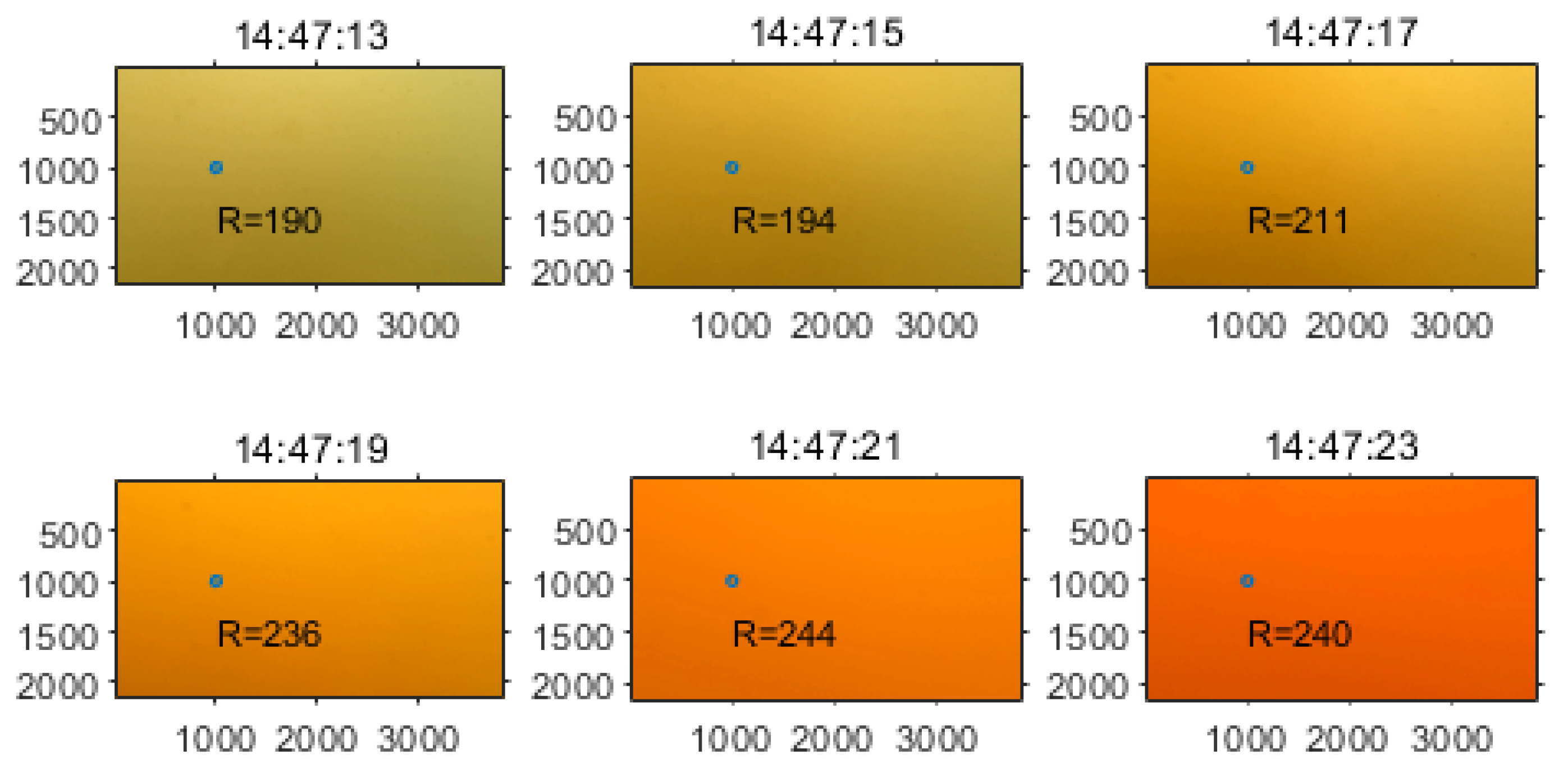
| Position (x, y) | Combination of Independent Variables | ||||
|---|---|---|---|---|---|
| (R, G, B, Gray) | (R, G, B) | (R, G) | (G, B) | (R, B) | |
| [3000, 250] | 0.9655 | 0.9655 | 0.9605 | 0.9644 | 0.9610 |
| [3000, 1000] | 0.9570 | 0.9569 | 0.9480 | 0.9399 | 0.9385 |
| [3000, 1700] | 0.9683 | 0.9680 | 0.9553 | 0.8770 | 0.9645 |
| [1000, 250] | 0.9581 | 0.9680 | 0.9541 | 0.9576 | 0.9534 |
| [1000, 1000] | 0.9529 | 0.9527 | 0.9487 | 0.9427 | 0.9227 |
| [1000, 1700] | 0.9674 | 0.9674 | 0.9522 | 0.8741 | 0.9631 |
| [1970, 250] | 0.9685 | 0.9684 | 0.9605 | 0.9664 | 0.9653 |
| [1970, 1000] | 0.9478 | 0.9460 | 0.9438 | 0.9397 | 0.9189 |
| [1970, 1700] | 0.9679 | 0.9674 | 0.9554 | 0.8777 | 0.9647 |
| Variance Inflation Factor | |||||
|---|---|---|---|---|---|
| (RGB Gray) | (RGB) | (RG) | (GB) | (RB) | |
| R | 1606 | 53 | 3.4 | - | 17.2 |
| G | 155 | 26 | 3.4 | 8.4 | - |
| B | 3369 | 130 | - | 8.4 | 17.2 |
| GR | 1028 | - | - | - | - |
Publisher’s Note: MDPI stays neutral with regard to jurisdictional claims in published maps and institutional affiliations. |
© 2022 by the authors. Licensee MDPI, Basel, Switzerland. This article is an open access article distributed under the terms and conditions of the Creative Commons Attribution (CC BY) license (https://creativecommons.org/licenses/by/4.0/).
Share and Cite
Kang, W.; Lee, K.; Kim, J. Prediction of Suspended Sediment Concentration Based on the Turbidity-Concentration Relationship Determined via Underwater Image Analysis. Appl. Sci. 2022, 12, 6125. https://doi.org/10.3390/app12126125
Kang W, Lee K, Kim J. Prediction of Suspended Sediment Concentration Based on the Turbidity-Concentration Relationship Determined via Underwater Image Analysis. Applied Sciences. 2022; 12(12):6125. https://doi.org/10.3390/app12126125
Chicago/Turabian StyleKang, Woochul, Kyungsu Lee, and Jongmin Kim. 2022. "Prediction of Suspended Sediment Concentration Based on the Turbidity-Concentration Relationship Determined via Underwater Image Analysis" Applied Sciences 12, no. 12: 6125. https://doi.org/10.3390/app12126125






